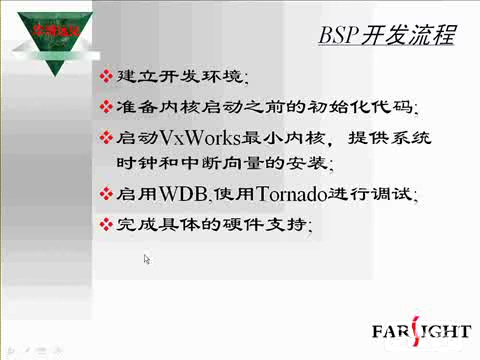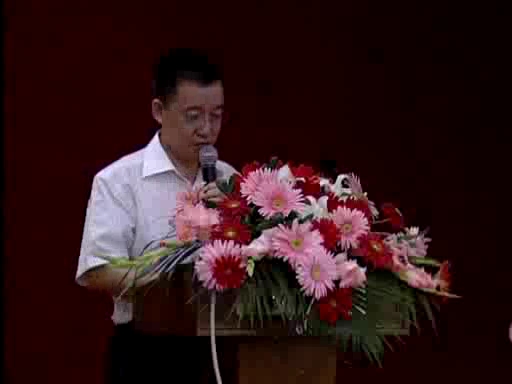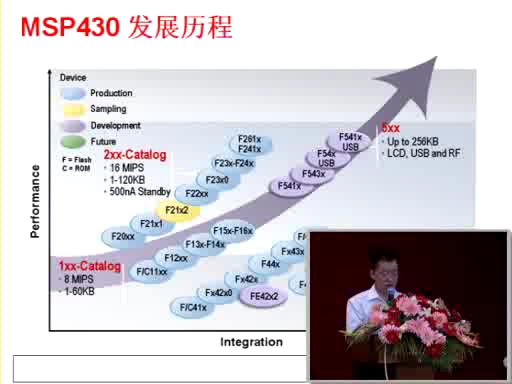標簽傳播算法(Label Propagation)及Python實現
眾所周知,機器學習可以大體分為三大類:監督學習、非監督學習和半監督學習。監督學習可以認為是我們有非常多的labeled標注數據來train一個模型,期待這個模型能學習到數據的分布,以期對未來沒有見到的樣本做預測。那這個性能的源頭--訓練數據,就顯得非常感覺。你必須有足夠的訓練數據,以覆蓋真正現實數據中的樣本分布才可以,這樣學習到的模型才有意義。那非監督學習就是沒有任何的labeled數據,就是平時所說的聚類了,利用他們本身的數據分布,給他們劃分類別。而半監督學習,顧名思義就是處于兩者之間的,只有少量的labeled數據,我們試圖從這少量的labeled數據和大量的unlabeled數據中學習到有用的信息。
本文引用地址:http://www.104case.com/article/201807/383624.htm一、半監督學習
半監督學習(Semi-supervised learning)發揮作用的場合是:你的數據有一些有label,一些沒有。而且一般是絕大部分都沒有,只有少許幾個有label。半監督學習算法會充分的利用unlabeled數據來捕捉我們整個數據的潛在分布。它基于三大假設:
1)Smoothness平滑假設:相似的數據具有相同的label。
2)Cluster聚類假設:處于同一個聚類下的數據具有相同label。
3)Manifold流形假設:處于同一流形結構下的數據具有相同label。
例如下圖,只有兩個labeled數據,如果直接用他們來訓練一個分類器,例如LR或者SVM,那么學出來的分類面就是左圖那樣的。如果現實中,這個數據是右圖那邊分布的話,豬都看得出來,左圖訓練的這個分類器爛的一塌糊涂、慘不忍睹。因為我們的labeled訓練數據太少了,都沒辦法覆蓋我們未來可能遇到的情況。但是,如果右圖那樣,把大量的unlabeled數據(黑色的)都考慮進來,有個全局觀念,牛逼的算法會發現,哎喲,原來是兩個圈圈(分別處于兩個圓形的流形之上)!那算法就很聰明,把大圈的數據都歸類為紅色類別,把內圈的數據都歸類為藍色類別。因為,實踐中,labeled數據是昂貴,很難獲得的,但unlabeled數據就不是了,寫個腳本在網上爬就可以了,因此如果能充分利用大量的unlabeled數據來輔助提升我們的模型學習,這個價值就非常大。

半監督學習算法有很多,下面我們介紹最簡單的標簽傳播算法(label propagation),最喜歡簡單了,哈哈。
二、標簽傳播算法
標簽傳播算法(label propagation)的核心思想非常簡單:相似的數據應該具有相同的label。LP算法包括兩大步驟:1)構造相似矩陣;2)勇敢的傳播吧。
2.1、相似矩陣構建
LP算法是基于Graph的,因此我們需要先構建一個圖。我們為所有的數據構建一個圖,圖的節點就是一個數據點,包含labeled和unlabeled的數據。節點i和節點j的邊表示他們的相似度。這個圖的構建方法有很多,這里我們假設這個圖是全連接的,節點i和節點j的邊權重為:

這里,α是超參。
還有個非常常用的圖構建方法是knn圖,也就是只保留每個節點的k近鄰權重,其他的為0,也就是不存在邊,因此是稀疏的相似矩陣。
2.2、LP算法
標簽傳播算法非常簡單:通過節點之間的邊傳播label。邊的權重越大,表示兩個節點越相似,那么label越容易傳播過去。我們定義一個NxN的概率轉移矩陣P:

Pij表示從節點i轉移到節點j的概率。假設有C個類和L個labeled樣本,我們定義一個LxC的label矩陣YL,第i行表示第i個樣本的標簽指示向量,即如果第i個樣本的類別是j,那么該行的第j個元素為1,其他為0。同樣,我們也給U個unlabeled樣本一個UxC的label矩陣YU。把他們合并,我們得到一個NxC的soft label矩陣F=[YL;YU]。soft label的意思是,我們保留樣本i屬于每個類別的概率,而不是互斥性的,這個樣本以概率1只屬于一個類。當然了,最后確定這個樣本i的類別的時候,是取max也就是概率最大的那個類作為它的類別的。那F里面有個YU,它一開始是不知道的,那最開始的值是多少?無所謂,隨便設置一個值就可以了。
千呼萬喚始出來,簡單的LP算法如下:
1)執行傳播:F=PF
2)重置F中labeled樣本的標簽:FL=YL
3)重復步驟1)和2)直到F收斂。
步驟1)就是將矩陣P和矩陣F相乘,這一步,每個節點都將自己的label以P確定的概率傳播給其他節點。如果兩個節點越相似(在歐式空間中距離越近),那么對方的label就越容易被自己的label賦予,就是更容易拉幫結派。步驟2)非常關鍵,因為labeled數據的label是事先確定的,它不能被帶跑,所以每次傳播完,它都得回歸它本來的label。隨著labeled數據不斷的將自己的label傳播出去,最后的類邊界會穿越高密度區域,而停留在低密度的間隔中。相當于每個不同類別的labeled樣本劃分了勢力范圍。
2.3、變身的LP算法
我們知道,我們每次迭代都是計算一個soft label矩陣F=[YL;YU],但是YL是已知的,計算它沒有什么用,在步驟2)的時候,還得把它弄回來。我們關心的只是YU,那我們能不能只計算YU呢?Yes。我們將矩陣P做以下劃分:

這時候,我們的算法就一個運算:

迭代上面這個步驟直到收斂就ok了,是不是很cool。可以看到FU不但取決于labeled數據的標簽及其轉移概率,還取決了unlabeled數據的當前label和轉移概率。因此LP算法能額外運用unlabeled數據的分布特點。
這個算法的收斂性也非常容易證明,具體見參考文獻[1]。實際上,它是可以收斂到一個凸解的:

所以我們也可以直接這樣求解,以獲得最終的YU。但是在實際的應用過程中,由于矩陣求逆需要O(n3)的復雜度,所以如果unlabeled數據非常多,那么I – PUU矩陣的求逆將會非常耗時,因此這時候一般選擇迭代算法來實現。
三、LP算法的Python實現
Python環境的搭建就不嗦了,可以參考前面的博客。需要額外依賴的庫是經典的numpy和matplotlib。代碼中包含了兩種圖的構建方法:RBF和KNN指定。同時,自己生成了兩個toy數據庫:兩條長形形狀和兩個圈圈的數據。第四部分我們用大點的數據庫來做實驗,先簡單的可視化驗證代碼的正確性,再前線。
算法代碼:
#***************************************************************************
#*
#* Description: label propagation
#* Author: Zou Xiaoyi (zouxy09@qq.com)
#* Date: 2015-10-15
#* HomePage: http://blog.csdn.net/zouxy09
#*
#**************************************************************************
import time
import numpy as np
# return k neighbors index
def navie_knn(dataSet, query, k):
numSamples = dataSet.shape[0]
## step 1: calculate Euclidean distance
diff = np.tile(query, (numSamples, 1)) - dataSet
squaredDiff = diff ** 2
squaredDist = np.sum(squaredDiff, axis = 1) # sum is performed by row
## step 2: sort the distance
sortedDistIndices = np.argsort(squaredDist)
if k > len(sortedDistIndices):
k = len(sortedDistIndices)
return sortedDistIndices[0:k]
# build a big graph (normalized weight matrix)
def buildGraph(MatX, kernel_type, rbf_sigma = None, knn_num_neighbors = None):
num_samples = MatX.shape[0]
affinity_matrix = np.zeros((num_samples, num_samples), np.float32)
if kernel_type == 'rbf':
if rbf_sigma == None:
raise ValueError('You should input a sigma of rbf kernel!')
for i in xrange(num_samples):
row_sum = 0.0
for j in xrange(num_samples):
diff = MatX[i, :] - MatX[j, :]
affinity_matrix[i][j] = np.exp(sum(diff**2) / (-2.0 * rbf_sigma**2))
row_sum += affinity_matrix[i][j]
affinity_matrix[i][:] /= row_sum
elif kernel_type == 'knn':
if knn_num_neighbors == None:
raise ValueError('You should input a k of knn kernel!')
for i in xrange(num_samples):
k_neighbors = navie_knn(MatX, MatX[i, :], knn_num_neighbors)
affinity_matrix[i][k_neighbors] = 1.0 / knn_num_neighbors
else:
raise NameError('Not support kernel type! You can use knn or rbf!')
return affinity_matrix
# label propagation
def labelPropagation(Mat_Label, Mat_Unlabel, labels, kernel_type = 'rbf', rbf_sigma = 1.5,
knn_num_neighbors = 10, max_iter = 500, tol = 1e-3):
# initialize
num_label_samples = Mat_Label.shape[0]
num_unlabel_samples = Mat_Unlabel.shape[0]
num_samples = num_label_samples + num_unlabel_samples
labels_list = np.unique(labels)
num_classes = len(labels_list)
MatX = np.vstack((Mat_Label, Mat_Unlabel))
clamp_data_label = np.zeros((num_label_samples, num_classes), np.float32)
for i in xrange(num_label_samples):
clamp_data_label[i][labels[i]] = 1.0
label_function = np.zeros((num_samples, num_classes), np.float32)
label_function[0 : num_label_samples] = clamp_data_label
label_function[num_label_samples : num_samples] = -1
# graph construction
affinity_matrix = buildGraph(MatX, kernel_type, rbf_sigma, knn_num_neighbors)
# start to propagation
iter = 0; pre_label_function = np.zeros((num_samples, num_classes), np.float32)
changed = np.abs(pre_label_function - label_function).sum()
while iter max_iter and changed > tol:
if iter % 1 == 0:
print ---> Iteration %d/%d, changed: %f % (iter, max_iter, changed)
pre_label_function = label_function
iter += 1
# propagation
label_function = np.dot(affinity_matrix, label_function)
# clamp
label_function[0 : num_label_samples] = clamp_data_label
# check converge
changed = np.abs(pre_label_function - label_function).sum()
# get terminate label of unlabeled data
unlabel_data_labels = np.zeros(num_unlabel_samples)
for i in xrange(num_unlabel_samples):
unlabel_data_labels[i] = np.argmax(label_function[i+num_label_samples])
return unlabel_data_labels
測試代碼:
#***************************************************************************
#*
#* Description: label propagation
#* Author: Zou Xiaoyi (zouxy09@qq.com)
#* Date: 2015-10-15
#* HomePage: http://blog.csdn.net/zouxy09
#*
#**************************************************************************
import time
import math
import numpy as np
from label_propagation import labelPropagation
# show
def show(Mat_Label, labels, Mat_Unlabel, unlabel_data_labels):
import matplotlib.pyplot as plt
for i in range(Mat_Label.shape[0]):
if int(labels[i]) == 0:
plt.plot(Mat_Label[i, 0], Mat_Label[i, 1], 'Dr')
elif int(labels[i]) == 1:
plt.plot(Mat_Label[i, 0], Mat_Label[i, 1], 'Db')
else:
plt.plot(Mat_Label[i, 0], Mat_Label[i, 1], 'Dy')
for i in range(Mat_Unlabel.shape[0]):
if int(unlabel_data_labels[i]) == 0:
plt.plot(Mat_Unlabel[i, 0], Mat_Unlabel[i, 1], 'or')
elif int(unlabel_data_labels[i]) == 1:
plt.plot(Mat_Unlabel[i, 0], Mat_Unlabel[i, 1], 'ob')
else:
plt.plot(Mat_Unlabel[i, 0], Mat_Unlabel[i, 1], 'oy')
plt.xlabel('X1'); plt.ylabel('X2')
plt.xlim(0.0, 12.)
plt.ylim(0.0, 12.)
plt.show()
def loadCircleData(num_data):
center = np.array([5.0, 5.0])
radiu_inner = 2
radiu_outer = 4
num_inner = num_data / 3
num_outer = num_data - num_inner
data = []
theta = 0.0
for i in range(num_inner):
pho = (theta % 360) * math.pi / 180
tmp = np.zeros(2, np.float32)
tmp[0] = radiu_inner * math.cos(pho) + np.random.rand(1) + center[0]
tmp[1] = radiu_inner * math.sin(pho) + np.random.rand(1) + center[1]
data.append(tmp)
theta += 2
theta = 0.0
for i in range(num_outer):
pho = (theta % 360) * math.pi / 180
tmp = np.zeros(2, np.float32)
tmp[0] = radiu_outer * math.cos(pho) + np.random.rand(1) + center[0]
tmp[1] = radiu_outer * math.sin(pho) + np.random.rand(1) + center[1]
data.append(tmp)
theta += 1
Mat_Label = np.zeros((2, 2), np.float32)
Mat_Label[0] = center + np.array([-radiu_inner + 0.5, 0])
Mat_Label[1] = center + np.array([-radiu_outer + 0.5, 0])
labels = [0, 1]
Mat_Unlabel = np.vstack(data)
return Mat_Label, labels, Mat_Unlabel
def loadBandData(num_unlabel_samples):
#Mat_Label = np.array([[5.0, 2.], [5.0, 8.0]])
#labels = [0, 1]
#Mat_Unlabel = np.array([[5.1, 2.], [5.0, 8.1]])
Mat_Label = np.array([[5.0, 2.], [5.0, 8.0]])
labels = [0, 1]
num_dim = Mat_Label.shape[1]
Mat_Unlabel = np.zeros((num_unlabel_samples, num_dim), np.float32)
Mat_Unlabel[:num_unlabel_samples/2, :] = (np.random.rand(num_unlabel_samples/2, num_dim) - 0.5) * np.array([3, 1]) + Mat_Label[0]
Mat_Unlabel[num_unlabel_samples/2 : num_unlabel_samples, :] = (np.random.rand(num_unlabel_samples/2, num_dim) - 0.5) * np.array([3, 1]) + Mat_Label[1]
return Mat_Label, labels, Mat_Unlabel
# main function
if __name__ == __main__:
num_unlabel_samples = 800
#Mat_Label, labels, Mat_Unlabel = loadBandData(num_unlabel_samples)
Mat_Label, labels, Mat_Unlabel = loadCircleData(num_unlabel_samples)
## Notice: when use 'rbf' as our kernel, the choice of hyper parameter 'sigma' is very import! It should be
## chose according to your dataset, specific the distance of two data points. I think it should ensure that
## each point has about 10 knn or w_i,j is large enough. It also influence the speed of converge. So, may be
## 'knn' kernel is better!
#unlabel_data_labels = labelPropagation(Mat_Label, Mat_Unlabel, labels, kernel_type = 'rbf', rbf_sigma = 0.2)
unlabel_data_labels = labelPropagation(Mat_Label, Mat_Unlabel, labels, kernel_type = 'knn', knn_num_neighbors = 10, max_iter = 400)
show(Mat_Label, labels, Mat_Unlabel, unlabel_data_labels)
該注釋的,代碼都注釋的,有看不明白的,歡迎交流。不同迭代次數時候的結果如下:

是不是很漂亮的傳播過程?!在數值上也是可以看到隨著迭代的進行逐漸收斂的,迭代的數值變化過程如下:
---> Iteration 0/400, changed: 1602.000000
---> Iteration 1/400, changed: 6.300182
---> Iteration 2/400, changed: 5.129996
---> Iteration 3/400, changed: 4.301994
---> Iteration 4/400, changed: 3.819295
---> Iteration 5/400, changed: 3.501743
---> Iteration 6/400, changed: 3.277122
---> Iteration 7/400, changed: 3.105952
---> Iteration 8/400, changed: 2.967030
---> Iteration 9/400, changed: 2.848606
---> Iteration 10/400, changed: 2.743997
---> Iteration 11/400, changed: 2.649270
---> Iteration 12/400, changed: 2.562057
---> Iteration 13/400, changed: 2.480885
---> Iteration 14/400, changed: 2.404774
---> Iteration 15/400, changed: 2.333075
---> Iteration 16/400, changed: 2.265301
---> Iteration 17/400, changed: 2.201107
---> Iteration 18/400, changed: 2.140209
---> Iteration 19/400, changed: 2.082354
---> Iteration 20/400, changed: 2.027376
---> Iteration 21/400, changed: 1.975071
---> Iteration 22/400, changed: 1.925286
---> Iteration 23/400, changed: 1.877894
---> Iteration 24/400, changed: 1.832743
---> Iteration 25/400, changed: 1.789721
---> Iteration 26/400, changed: 1.748706
---> Iteration 27/400, changed: 1.709593
---> Iteration 28/400, changed: 1.672284
---> Iteration 29/400, changed: 1.636668
---> Iteration 30/400, changed: 1.602668
---> Iteration 31/400, changed: 1.570200
---> Iteration 32/400, changed: 1.539179
---> Iteration 33/400, changed: 1.509530
---> Iteration 34/400, changed: 1.481182
---> Iteration 35/400, changed: 1.454066
---> Iteration 36/400, changed: 1.428120
---> Iteration 37/400, changed: 1.403283
---> Iteration 38/400, changed: 1.379502
---> Iteration 39/400, changed: 1.356734
---> Iteration 40/400, changed: 1.334906
---> Iteration 41/400, changed: 1.313983
---> Iteration 42/400, changed: 1.293921
---> Iteration 43/400, changed: 1.274681
---> Iteration 44/400, changed: 1.256214
---> Iteration 45/400, changed: 1.238491
---> Iteration 46/400, changed: 1.221474
---> Iteration 47/400, changed: 1.205126
---> Iteration 48/400, changed: 1.189417
---> Iteration 49/400, changed: 1.174316
---> Iteration 50/400, changed: 1.159804
---> Iteration 51/400, changed: 1.145844
---> Iteration 52/400, changed: 1.132414
---> Iteration 53/400, changed: 1.119490
---> Iteration 54/400, changed: 1.107032
---> Iteration 55/400, changed: 1.095054
---> Iteration 56/400, changed: 1.083513
---> Iteration 57/400, changed: 1.072397
---> Iteration 58/400, changed: 1.061671
---> Iteration 59/400, changed: 1.051324
---> Iteration 60/400, changed: 1.041363
---> Iteration 61/400, changed: 1.031742
---> Iteration 62/400, changed: 1.022459
---> Iteration 63/400, changed: 1.013494
---> Iteration 64/400, changed: 1.004836
---> Iteration 65/400, changed: 0.996484
---> Iteration 66/400, changed: 0.988407
---> Iteration 67/400, changed: 0.980592
---> Iteration 68/400, changed: 0.973045
---> Iteration 69/400, changed: 0.965744
---> Iteration 70/400, changed: 0.958682
---> Iteration 71/400, changed: 0.951848
---> Iteration 72/400, changed: 0.945227
---> Iteration 73/400, changed: 0.938820
---> Iteration 74/400, changed: 0.932608
---> Iteration 75/400, changed: 0.926590
---> Iteration 76/400, changed: 0.920765
---> Iteration 77/400, changed: 0.915107
---> Iteration 78/400, changed: 0.909628
---> Iteration 79/400, changed: 0.904309
---> Iteration 80/400, changed: 0.899143
---> Iteration 81/400, changed: 0.894122
---> Iteration 82/400, changed: 0.889259
---> Iteration 83/400, changed: 0.884530
---> Iteration 84/400, changed: 0.879933
---> Iteration 85/400, changed: 0.875464
---> Iteration 86/400, changed: 0.871121
---> Iteration 87/400, changed: 0.866888
---> Iteration 88/400, changed: 0.862773
---> Iteration 89/400, changed: 0.858783
---> Iteration 90/400, changed: 0.854879
---> Iteration 91/400, changed: 0.851084
---> Iteration 92/400, changed: 0.847382
---> Iteration 93/400, changed: 0.843779
---> Iteration 94/400, changed: 0.840274
---> Iteration 95/400, changed: 0.836842
---> Iteration 96/400, changed: 0.833501
---> Iteration 97/400, changed: 0.830240
---> Iteration 98/400, changed: 0.827051
---> Iteration 99/400, changed: 0.823950
---> Iteration 100/400, changed: 0.820906
---> Iteration 101/400, changed: 0.817946
---> Iteration 102/400, changed: 0.815053
---> Iteration 103/400, changed: 0.812217
---> Iteration 104/400, changed: 0.809437
---> Iteration 105/400, changed: 0.806724
---> Iteration 106/400, changed: 0.804076
---> Iteration 107/400, changed: 0.801480
---> Iteration 108/400, changed: 0.798937
---> Iteration 109/400, changed: 0.796448
---> Iteration 110/400, changed: 0.794008
---> Iteration 111/400, changed: 0.791612
---> Iteration 112/400, changed: 0.789282
---> Iteration 113/400, changed: 0.786984
---> Iteration 114/400, changed: 0.784728
---> Iteration 115/400, changed: 0.782516
---> Iteration 116/400, changed: 0.780355
---> Iteration 117/400, changed: 0.778216
---> Iteration 118/400, changed: 0.776139
---> Iteration 119/400, changed: 0.774087
---> Iteration 120/400, changed: 0.772072
---> Iteration 121/400, changed: 0.770085
---> Iteration 122/400, changed: 0.768146
---> Iteration 123/400, changed: 0.766232
---> Iteration 124/400, changed: 0.764356
---> Iteration 125/400, changed: 0.762504
---> Iteration 126/400, changed: 0.760685
---> Iteration 127/400, changed: 0.758889
---> Iteration 128/400, changed: 0.757135
---> Iteration 129/400, changed: 0.755406
四、LP算法MPI并行實現
這里,我們測試的是LP的變身版本。從公式,我們可以看到,第二項PULYL迭代過程并沒有發生變化,所以這部分實際上從迭代開始就可以計算好,從而避免重復計算。不過,不管怎樣,LP算法都要計算一個UxU的矩陣PUU和一個UxC矩陣FU的乘積。當我們的unlabeled數據非常多,而且類別也很多的時候,計算是很慢的,同時占用的內存量也非常大。另外,構造Graph需要計算兩兩的相似度,也是O(n2)的復雜度,當我們數據的特征維度很大的時候,這個計算量也是非常客觀的。所以我們就得考慮并行處理了。而且最好是能放到集群上并行。那如何并行呢?
對算法的并行化,一般分為兩種:數據并行和模型并行。
數據并行很好理解,就是將數據劃分,每個節點只處理一部分數據,例如我們構造圖的時候,計算每個數據的k近鄰。例如我們有1000個樣本和20個CPU節點,那么就平均分發,讓每個CPU節點計算50個樣本的k近鄰,然后最后再合并大家的結果。可見這個加速比也是非常可觀的。
模型并行一般發生在模型很大,無法放到單機的內存里面的時候。例如龐大的深度神經網絡訓練的時候,就需要把這個網絡切開,然后分別求解梯度,最后有個leader的節點來收集大家的梯度,再反饋給大家去更新。當然了,其中存在更細致和高效的工程處理方法。在我們的LP算法中,也是可以做模型并行的。假如我們的類別數C很大,把類別數切開,讓不同的CPU節點處理,實際上就相當于模型并行了。
那為啥不切大矩陣PUU,而是切小點的矩陣FU,因為大矩陣PUU沒法獨立分塊,并行的一個原則是處理必須是獨立的。 矩陣FU依賴的是所有的U,而把PUU切開分發到其他節點的時候,每次FU的更新都需要和其他的節點通信,這個通信的代價是很大的(實際上,很多并行系統沒法達到線性的加速度的瓶頸是通信!線性加速比是,我增加了n臺機器,速度就提升了n倍)。但是對類別C也就是矩陣FU切分,就不會有這個問題,因為他們的計算是獨立的。只是決定樣本的最終類別的時候,將所有的FU收集回來求max就可以了。
所以,在下面的代碼中,是同時包含了數據并行和模型并行的雛形的。另外,還值得一提的是,我們是迭代算法,那決定什么時候迭代算法停止?除了判斷收斂外,我們還可以讓每迭代幾步,就用測試label測試一次結果,看模型的整體訓練性能如何。特別是判斷訓練是否過擬合的時候非常有效。因此,代碼中包含了這部分內容。
好了,代碼終于來了。大家可以搞點大數據庫來測試,如果有MPI集群條件的話就更好了。
下面的代碼依賴numpy、scipy(用其稀疏矩陣加速計算)和mpi4py。其中mpi4py需要依賴openmpi和Cpython,可以參考我之前的博客進行安裝。
#***************************************************************************
#*
#* Description: label propagation
#* Author: Zou Xiaoyi (zouxy09@qq.com)
#* Date: 2015-10-15
#* HomePage: http://blog.csdn.net/zouxy09
#*
#**************************************************************************
import os, sys, time
import numpy as np
from scipy.sparse import csr_matrix, lil_matrix, eye
import operator
import cPickle as pickle
import mpi4py.MPI as MPI
#
# Global variables for MPI
#
# instance for invoking MPI related functions
comm = MPI.COMM_WORLD
# the node rank in the whole community
comm_rank = comm.Get_rank()
# the size of the whole community, i.e., the total number of working nodes in the MPI cluster
comm_size = comm.Get_size()
# load mnist dataset
def load_MNIST():
import gzip
f = gzip.open(mnist.pkl.gz, rb)
train, val, test = pickle.load(f)
f.close()
Mat_Label = train[0]
labels = train[1]
Mat_Unlabel = test[0]
groundtruth = test[1]
labels_id = [0, 1, 2, 3, 4, 5, 6, 7, 8, 9]
return Mat_Label, labels, labels_id, Mat_Unlabel, groundtruth
# return k neighbors index
def navie_knn(dataSet, query, k):
numSamples = dataSet.shape[0]
## step 1: calculate Euclidean distance
diff = np.tile(query, (numSamples, 1)) - dataSet
squaredDiff = diff ** 2
squaredDist = np.sum(squaredDiff, axis = 1) # sum is performed by row
## step 2: sort the distance
sortedDistIndices = np.argsort(squaredDist)
if k > len(sortedDistIndices):
k = len(sortedDistIndices)
return sortedDistIndices[0:k]
# build a big graph (normalized weight matrix)
# sparse U x (U + L) matrix
def buildSubGraph(Mat_Label, Mat_Unlabel, knn_num_neighbors):
num_unlabel_samples = Mat_Unlabel.shape[0]
data = []; indices = []; indptr = [0]
Mat_all = np.vstack((Mat_Label, Mat_Unlabel))
values = np.ones(knn_num_neighbors, np.float32) / knn_num_neighbors
for i in xrange(num_unlabel_samples):
k_neighbors = navie_knn(Mat_all, Mat_Unlabel[i, :], knn_num_neighbors)
indptr.append(np.int32(indptr[-1]) + knn_num_neighbors)
indices.extend(k_neighbors)
data.append(values)
return csr_matrix((np.hstack(data), indices, indptr))
# build a big graph (normalized weight matrix)
# sparse U x (U + L) matrix
def buildSubGraph_MPI(Mat_Label, Mat_Unlabel, knn_num_neighbors):
num_unlabel_samples = Mat_Unlabel.shape[0]
local_data = []; local_indices = []; local_indptr = [0]
Mat_all = np.vstack((Mat_Label, Mat_Unlabel))
values = np.ones(knn_num_neighbors, np.float32) / knn_num_neighbors
sample_offset = np.linspace(0, num_unlabel_samples, comm_size + 1).astype('int')
for i in range(sample_offset[comm_rank], sample_offset[comm_rank+1]):
k_neighbors = navie_knn(Mat_all, Mat_Unlabel[i, :], knn_num_neighbors)
local_indptr.append(np.int32(local_indptr[-1]) + knn_num_neighbors)
local_indices.extend(k_neighbors)
local_data.append(values)
data = np.hstack(comm.allgather(local_data))
indices = np.hstack(comm.allgather(local_indices))
indptr_tmp = comm.allgather(local_indptr)
indptr = []
for i in range(len(indptr_tmp)):
if i == 0:
indptr.extend(indptr_tmp[i])
else:
last_indptr = indptr[-1]
del(indptr[-1])
indptr.extend(indptr_tmp[i] + last_indptr)
return csr_matrix((np.hstack(data), indices, indptr), dtype = np.float32)
# label propagation
def run_label_propagation_sparse(knn_num_neighbors = 20, max_iter = 100, tol = 1e-4, test_per_iter = 1):
# load data and graph
print Processor %d/%d loading graph file... % (comm_rank, comm_size)
#Mat_Label, labels, Mat_Unlabel, groundtruth = loadFourBandData()
Mat_Label, labels, labels_id, Mat_Unlabel, unlabel_data_id = load_MNIST()
if comm_size > len(labels_id):
raise ValueError(Sorry, the processors must be less than the number of classes)
#affinity_matrix = buildSubGraph(Mat_Label, Mat_Unlabel, knn_num_neighbors)
affinity_matrix = buildSubGraph_MPI(Mat_Label, Mat_Unlabel, knn_num_neighbors)
# get some parameters
num_classes = len(labels_id)
num_label_samples = len(labels)
num_unlabel_samples = Mat_Unlabel.shape[0]
affinity_matrix_UL = affinity_matrix[:, 0:num_label_samples]
affinity_matrix_UU = affinity_matrix[:, num_label_samples:num_label_samples+num_unlabel_samples]
if comm_rank == 0:
print Have %d labeled images, %d unlabeled images and %d classes % (num_label_samples, num_unlabel_samples, num_classes)
# divide label_function_U and label_function_L to all processors
class_offset = np.linspace(0, num_classes, comm_size + 1).astype('int')
# initialize local label_function_U
local_start_class = class_offset[comm_rank]
local_num_classes = class_offset[comm_rank+1] - local_start_class
local_label_function_U = eye(num_unlabel_samples, local_num_classes, 0, np.float32, format='csr')
# initialize local label_function_L
local_label_function_L = lil_matrix((num_label_samples, local_num_classes), dtype = np.float32)
for i in xrange(num_label_samples):
class_off = int(labels[i]) - local_start_class
if class_off >= 0 and class_off local_num_classes:
local_label_function_L[i, class_off] = 1.0
local_label_function_L = local_label_function_L.tocsr()
local_label_info = affinity_matrix_UL.dot(local_label_function_L)
print Processor %d/%d has to process %d classes... % (comm_rank, comm_size, local_label_function_L.shape[1])
# start to propagation
iter = 1; changed = 100.0;
evaluation(num_unlabel_samples, local_start_class, local_label_function_U, unlabel_data_id, labels_id)
while True:
pre_label_function = local_label_function_U.copy()
# propagation
local_label_function_U = affinity_matrix_UU.dot(local_label_function_U) + local_label_info
# check converge
local_changed = abs(pre_label_function - local_label_function_U).sum()
changed = comm.reduce(local_changed, root = 0, op = MPI.SUM)
status = 'RUN'
test = False
if comm_rank == 0:
if iter % 1 == 0:
norm_changed = changed / (num_unlabel_samples * num_classes)
print ---> Iteration %d/%d, changed: %f % (iter, max_iter, norm_changed)
if iter >= max_iter or changed tol:
status = 'STOP'
print ************** Iteration over! ****************
if iter % test_per_iter == 0:
test = True
iter += 1
test = comm.bcast(test if comm_rank == 0 else None, root = 0)
status = comm.bcast(status if comm_rank == 0 else None, root = 0)
if status == 'STOP':
break
if test == True:
evaluation(num_unlabel_samples, local_start_class, local_label_function_U, unlabel_data_id, labels_id)
evaluation(num_unlabel_samples, local_start_class, local_label_function_U, unlabel_data_id, labels_id)
def evaluation(num_unlabel_samples, local_start_class, local_label_function_U, unlabel_data_id, labels_id):
# get local label with max score
if comm_rank == 0:
print Start to combine local result...
local_max_score = np.zeros((num_unlabel_samples, 1), np.float32)
local_max_label = np.zeros((num_unlabel_samples, 1), np.int32)
for i in xrange(num_unlabel_samples):
local_max_label[i, 0] = np.argmax(local_label_function_U.getrow(i).todense())
local_max_score[i, 0] = local_label_function_U[i, local_max_label[i, 0]]
local_max_label[i, 0] += local_start_class
# gather the results from all the processors
if comm_rank == 0:
print Start to gather results from all processors
all_max_label = np.hstack(comm.allgather(local_max_label))
all_max_score = np.hstack(comm.allgather(local_max_score))
# get terminate label of unlabeled data
if comm_rank == 0:
print Start to analysis the results...
right_predict_count = 0
for i in xrange(num_unlabel_samples):
if i % 1000 == 0:
print ***, all_max_score[i]
max_idx = np.argmax(all_max_score[i])
max_label = all_max_label[i, max_idx]
if int(unlabel_data_id[i]) == int(labels_id[max_label]):
right_predict_count += 1
accuracy = float(right_predict_count) * 100.0 / num_unlabel_samples
print Have %d samples, accuracy: %.3f%%! % (num_unlabel_samples, accuracy)
if __name__ == '__main__':
run_label_propagation_sparse(knn_num_neighbors = 20, max_iter = 30)













評論